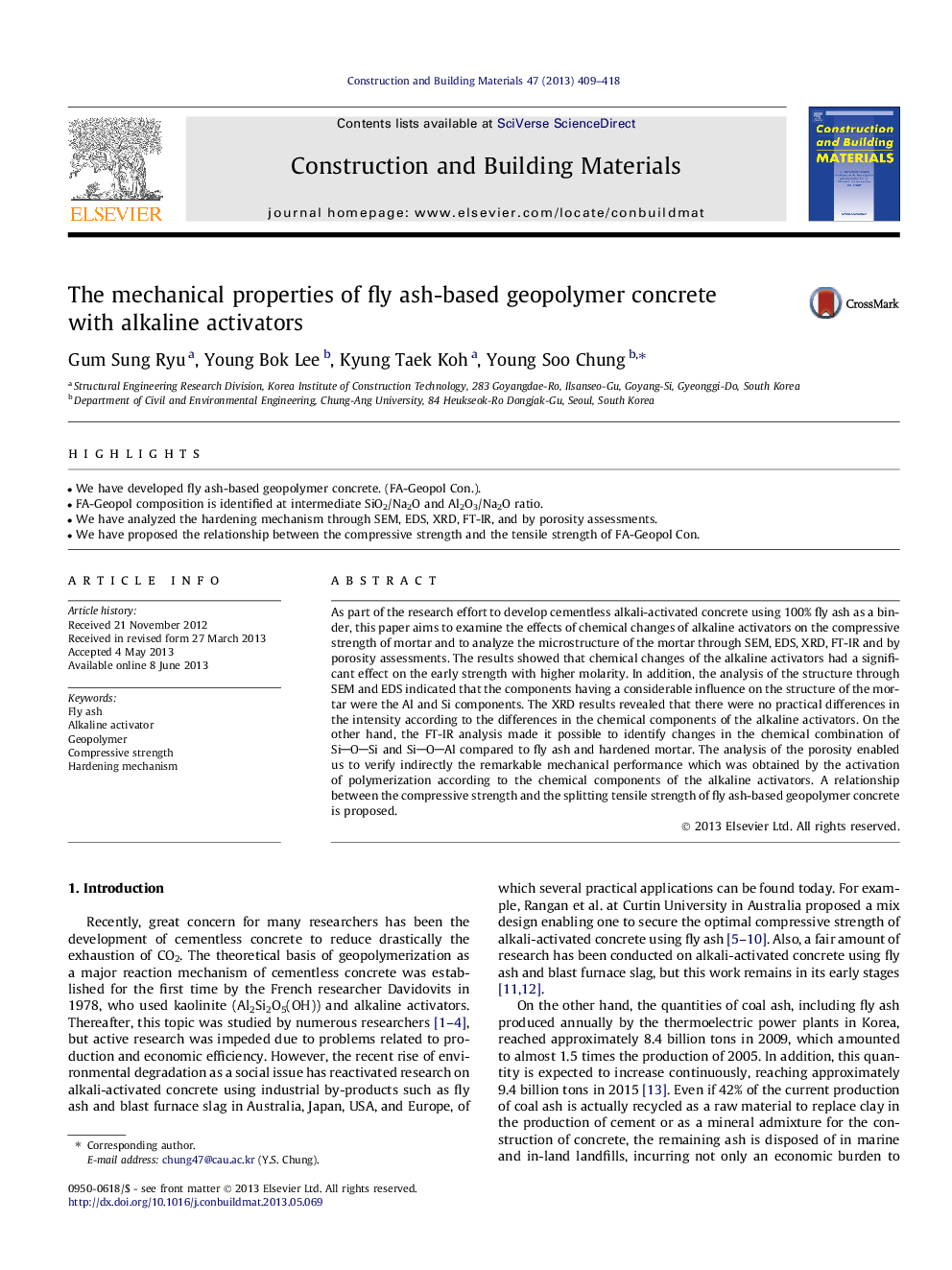| Article ID | Journal | Published Year | Pages | File Type |
|---|---|---|---|---|
| 6725478 | Construction and Building Materials | 2013 | 10 Pages |
Abstract
As part of the research effort to develop cementless alkali-activated concrete using 100% fly ash as a binder, this paper aims to examine the effects of chemical changes of alkaline activators on the compressive strength of mortar and to analyze the microstructure of the mortar through SEM, EDS, XRD, FT-IR and by porosity assessments. The results showed that chemical changes of the alkaline activators had a significant effect on the early strength with higher molarity. In addition, the analysis of the structure through SEM and EDS indicated that the components having a considerable influence on the structure of the mortar were the Al and Si components. The XRD results revealed that there were no practical differences in the intensity according to the differences in the chemical components of the alkaline activators. On the other hand, the FT-IR analysis made it possible to identify changes in the chemical combination of SiOSi and SiOAl compared to fly ash and hardened mortar. The analysis of the porosity enabled us to verify indirectly the remarkable mechanical performance which was obtained by the activation of polymerization according to the chemical components of the alkaline activators. A relationship between the compressive strength and the splitting tensile strength of fly ash-based geopolymer concrete is proposed.
Related Topics
Physical Sciences and Engineering
Engineering
Civil and Structural Engineering
Authors
Gum Sung Ryu, Young Bok Lee, Kyung Taek Koh, Young Soo Chung,
